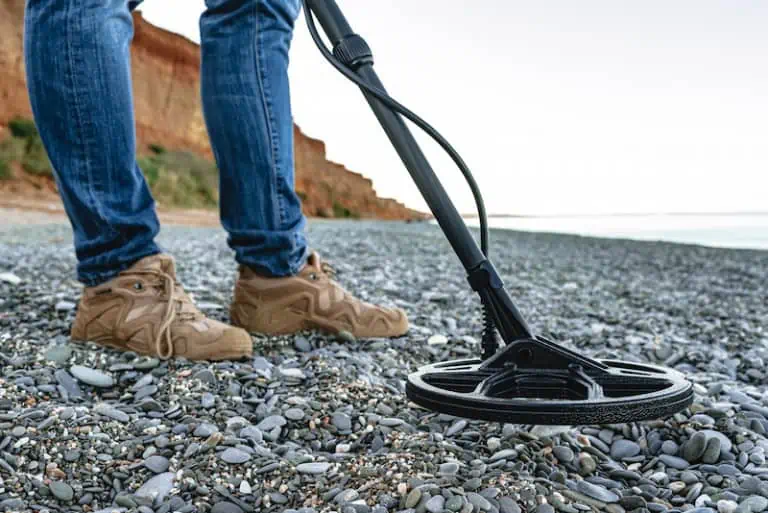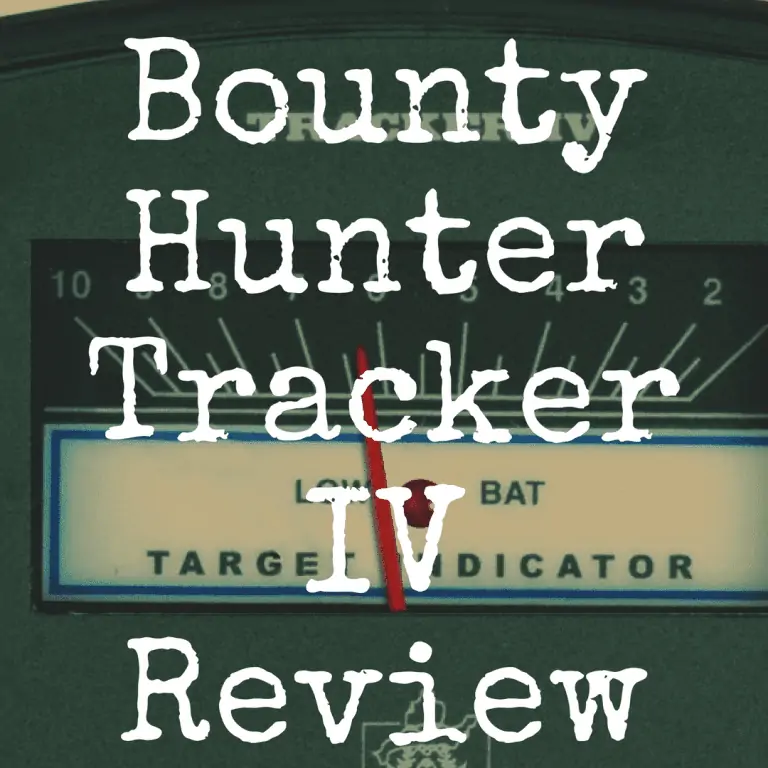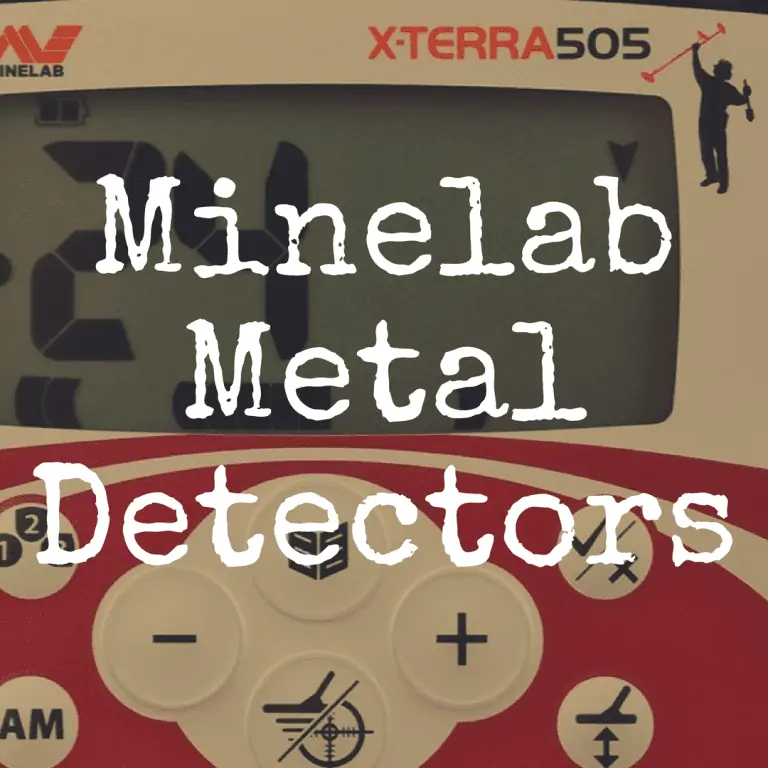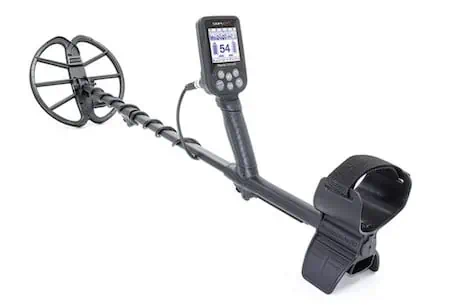Minelab Excalibur II review

Minelab has been a top metal detector manufacturer for over 35 years. It has consistently ben an innovative industry leading company. Minelab has a team of 50 engineers always on the lookout for ways to create new technologies and metal detecting equipment. Minelab has always been known for making metal detectors for extreme soil conditions. They specialize in detectors for magnetic soils, iron rich soils, and salt water. All their detectors are ruggedly built and follow military grade standards.
Minelab is part of Codan Limited, which is an industry leader in technology the world over. They have a huge dealer network which includes:
- Australia
- The Middle East
- Europe
- Asia
- The Americas
In this article, I’m going to be reviewing the Minelab Excalibur II detector. And to better help you, please take a moment to view our interactive guide below, where you can directly compare the Simplex + to other popular detectors on the market:
| Photo | Model | Price | Features |
|---|---|---|---|
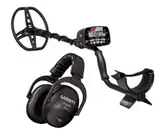 | Garrett AT Max | $$$ | Waterproof to 10 feet |
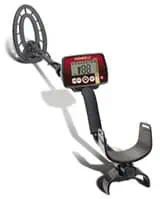 | Fisher F22 | $$ | 9″ Triangulated Concentric Coil |
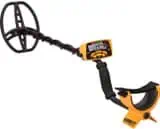 | Garrett Ace 400 | $$$ | 8.5 x 11" DD coil |
 | Minelab Vanquish 540 | $ | Search Modes: Coin, Relic, Jewelry, Custom, All Metal |
Meet the Excalibur II
Minelab’s Excalibur II is built for underwater performance. This detector features Minelab’s multi-frequency BBS technology. BBS stands for Broad Band Spectrum. This technology simultaneously transmits, receives, and analyses a broad band of multiple frequencies to give fantastic depth, high sensitivity, and accurate discrimination on a wide range of target types. It also features RCB, Receive Coil Boost, circuitry. This technology greatly amplifies weak target signals inside the search coil. This has 3 advantages over typical techniques of amplification inside a control box:
- Greater immunity to electrical noise which reduces false signals
- No loss of strength or faint targets through the cable
- Improved detection depth and sensitivity
The Excalibur II is designed for coin shooting, relic hunting, jewelry hunting, beach hunting, and diving. It is fully submersible up to 200 feet and comes standard with Koss 8-ohm hardwired headphones. The BBS technology on the Excalibur II operates at frequencies from 1.5 kHz to 25.5 kHz. It features 2 detection modes: Discriminate and All Metal. Discrimination is variable and adjustable. This detector does not have an LCD screen and is controlled by knobs. These knobs adjust the volume, sensitivity, and discrimination. Ground balancing is automatic, sensitivity is automatic and manual, threshold is adjustable.
The Excalibur II operates on a rechargeable battery pack but can use alkaline batteries with an optional accessory. The shaft is adjustable and can be set up for land use or diving use. The Excalibur II comes standard with a 10” round Double-D hardwired search coil. Users can purchase an 8” search coil instead. This detector is heavier than a lot of land detectors at 4.6 pounds with the 8” search coil and 5.1 pounds with the standard 10” search coil.
Minelab offers a 1-year warranty on the Excalibur II.
Minelab Excalibur II Battery
The Minelab Excalibur II comes with a rechargeable battery pod. These pods can be purchased separately if necessary. This NiMH battery pod is fully submersible and is used for diving. These rechargeable battery pods give users 14 to 19 hours of use on a full charge.
The Excalibur II can be used with an alkaline battery pod. This pod is purchased as an accessory and is water resistant. It holds 8 AA batteries and should only be used when wading, not diving. The alkaline battery pod has a maximum submersible depth of up to 10 feet.
Minelab Excalibur II Depth
Although the Excalibur II is built to search in deep water, it is also a great land metal detector. On land, this multiple frequency metal detector has no problem finding coins up to 12” deep! The different frequencies of this metal detector allow it to search deeply and over a range of target types. In water, you can expect superior performance as well.
Minelab Excalibur II Accessories
There are several accessories Minelab has built to work with the Excalibur II. As mentioned above, you can purchase an extra or replacement battery pack or alkaline battery pack. There are also replacement knobs, chargers, and short dive shaft. Users can also purchase a hip mounting kit that attaches the control box to the body, making the shaft and search coil lighter and easier to swing. Users can also purchase a side mount shaft for this detector. Replacement shaft parts, arm rest, knob guard, and a car charging adapter are also available for purchase.
Minelab Excalibur II Beach Settings
It is important to use the search mode that best suits the beaches you are searching on. In tourist areas, using Discrimination is important because of the amount of trash targets. Areas with little to no trash, Discrimination is not necessary. Using the Discrimination or Pinpoint modes on the Excalibur II will warrant digging all metal targets. Old coins and artifacts can be encrusted in sand, coral, or attached to iron, so the extra digging will be worth it to ensure you leave nothing behind.
Once users become familiar with the Excalibur II and its settings, getting out of Auto Sensitivity gives much better depth under normal beach and water circumstances. After turning on the machine, turn the sensitivity control knob in small increments until it is chattering. Back the sensitivity down until there is only the occasional signal when sweeping. This keeps the sensitivity as high as possible while reducing false signals. Readjust the sensitivity, as necessary.
Minelab Excalibur II VS Minelab Equinox 800
Minelab’s Equinox 800 is another multiple frequency metal detector. This detector operates on Minelab’s Multi-IQ technology. It emits multiple frequencies at once for more search power over a wider range of target types. It can also be used in single frequency mode, which has 5 different individual frequencies:
- 5 kHz – Great for silver coins
- 10 kHz – Best for Roman hammered coins
- 15 kHz – Best for general treasure hunting
- 20 kHz – Best for general treasure hunting and gold prospecting
- 40 kHz – Optimal settings for small gold nuggets and fine gold jewelry

Using a single frequency can help in areas with a lot of ground noise. All treasure types can be found with multiple frequency mode making this detector easy to use for all purpose metal detecting. The Equinox 800 has 4 detection modes: Park, Beach, Field, and Gold. It also has 8 custom search profiles, automatic and manual noise cancelling, automatic and manual ground balancing, and 25 adjustable sensitivity levels. The Equinox 800 has adjustable threshold volume, level, and pitch.
The Equinox 800 features an LCD screen and numerical target ID, something the Excalibur II does not have. It has 50 segments of notch discrimination, tone break, tone pitch, tone volume, and 5 depth indicators. The LCD screen is backlit for easy viewing. It operates on a rechargeable battery pack giving users up to 12 hours of search time on one charge. The Equinox 800 also has upgradeable software. Users simply download the updates from Minelab’s website then connect the control box to the computer.
This detector is lightweight at just 2.96 pounds. It comes with an 11” Double-D Smart search coil with skid plate. It is fully submersible up to 10 feet, so it is not for diving like the Excalibur II. The Equinox 800 features wireless technology so it can be used with wireless headphones. Minelab offers a 3-year warranty on the Equinox 800.
- You can read our Minelab Equinox 800 review here!
Minelab Excalibur II VS Garrett AT Pro
Garrett’s AT Pro is from Garrett’s popular AT line of metal detectors. It is fully submersible up to 10 feet, so it is not for diving like the Excalibur II. It has 40 iron discrimination segments, adjustable notch discrimination, and 6 search modes. The AT Pro features Garrett’s Pro Audio. Pro Audio, or Proportional Audio, helps users hear subtle change sin target response and lets users judge the target size, depth, and shape. Of the 6 search modes, 3 are Pro Audio and 3 are Standard Audio. Standard Audio gives full strength beeps regardless of a target’s amplitude.
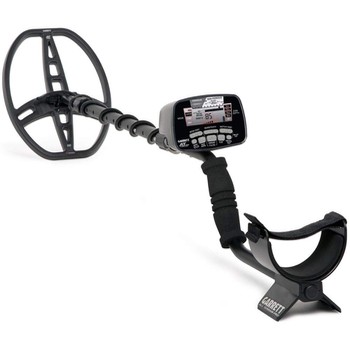
The AT Pro features Iron Audio and uses Fast Track ground balancing. This helps in highly mineralized soil conditions. Unlike the Excalibur II, the AT Pro has an LCD screen with numerical target ID. The LCD screen is not backlit. It features 8 sensitivity and depth adjustments, pinpoint mode, and operates at 15 kHz, adjustable frequency. Adjustable frequency does not mean multiple frequency. Rather, the frequency can be shifted slightly up or down to compensate for electromagnetic or soil mineralization interference. This frequency is not ideal for finding gold but will work well for higher conductive metals. The AT Pro comes with an 11” Double-D PROformance search coil and weighs 3.03 pounds. This detector uses 4 AA batteries. Garrett offers a 2-year warranty on the AT Pro.
- Check out my Garrett AT Pro review here.
Minelab Excalibur II VS Garrett Sea Hunter Mark II
Garrett’s Sea Hunter Mark II uses a microprocessor operating system for advanced operating quality. This detector is recommended for treasure diving, coin shooting, beach hunting, surf hunting, coin shooting, jewelry hunting, and relic hunting. This detector is different than the others on this list as it is a pulse induction or PI metal detector. PI metal detectors use one coil to transmit and receive. Pulses of electricity travel through the coil and penetrate the ground to create a magnetic field. After the pulse ends, the magnetic field reverses polarity and collapses causing an electrical spike. If the pulse strikes a target it takes longer for the reflected pulse to return to the control box alerting the detector to a target’s presence.
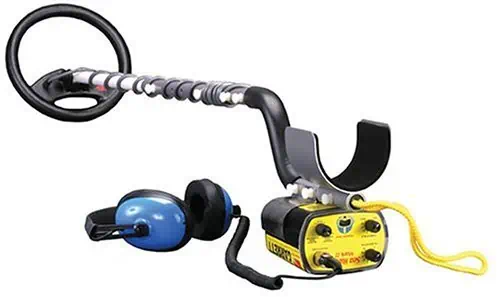
The Sea Hunter Mark II emits 750 pules per second. The more pulses per second the higher the sensitivity. It features 3 search modes, adjustable audio threshold, and non-motion all metal deep seeking mode. The detector comes with Garrett’s Discrete Trash Elimination technology which allows the detector to eliminate the bulk of pull tabs and foil with no sensitivity loss. This detector is fully submersible up to 200 feet, like the Excalibur II.
The Sea Hunter Mark II comes with an 8” PROformance™ search coil, but a 10” by 14” search coil is also available. It also comes with submersible headphones and a hip mounting kit. The Sea Hunter Mark II weighs 5.1 pounds and operates on 8 AA batteries. Because this is a PI metal detector, no ground balancing is required. PI metal detectors are inherently immune to saltwater and soil mineralization. This model does not have an LCD screen and uses knobs for control, like the Excalibur II. This detector has 2 trash elimination modes but does not have iron audio. Garrett offers a 1-year warranty on the Sea Hunter Mark II.
Minelab Excalibur II VS Minelab CTX 3030
The Minelab CTX 3030 is one of my all-time favorite metal detectors. This is a high-end metal detector designed specifically for intermediate, advanced, or professional metal detectorists. This detector has a lot of advanced technologies making it the top of its class. It features FBS 2 which is Minelab’s multiple frequency rectangular wave transmission. This operates on frequencies from 1.5 kHz clear to 100 kHz. This wide range ensures the CTX 3030 will not miss many targets. This also means the detector works well in highly mineralized soil conditions.
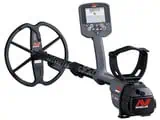
The CTX 3030 is fully submersible up to 10 feet, far shallower than the Excalibur II’s 200-foot depth. This detector is recommended for relic hunting, coin shooting, beach hunting, and jewelry hunting. It is not specifically for gold, but the higher frequencies make this detector great at finding small bits of gold. The CTX 3030 has 10 customizable detection modes and 5 preset modes:
- Coins
- Beach
- Relic
- Silver
- High Trash
The CTX 3030 has a pinpoint mode, depth indicator, and full color target information screen. It features Smartfind 2™ discrimination. This sends digital signal processing and better FeCo discrimination. It features 10 tone profiles to allow users to accept or reject any target type. Target Trace and Target Separation allow uses to identify and differentiate among multiple targets at one time for more accurate detection.
The CTX 3030 has many advanced features. GeoTrails shows the ground already covered. WayPoints lets users mark points of interest on their map. FindPoints lets users mark treasure locations. GeoHunts records the whole metal detecting trip. Detector settings can be uploaded along with pictures via the Xchange 2 app. This lets users organize their treasure hunts and settings. Google Maps locations can be downloaded and saved directly to the detector. Wi-Stream is used to enable fast wireless response with no loss of sound quality.
The CTX 3030 weighs 5.2 pounds and uses a rechargeable battery pack with fast charging capabilities. It comes standard with an 11” Double-D search coil. The LCD screen is backlit with adjustable brightness. The detector has built-in memory which can save user settings when the detector powers off or the batteries run dry. The CTX 3030 has options for use in 9 different languages. Minelab offers a 3-year warranty on the CTX 3030.
Minelab Excalibur II VS Garrett Infinium LS
Garrett’s Infinium LS is another PI metal detector. It is no longer produced and was replaced by the Garrett ATX. This model is a great option for underwater metal detecting and is waterproof up to 200 feet, like the Excalibur II. As with other PI detectors, the Infinium LS is inherently immune to saltwater interference, soil mineralization, and electromagnetic interference. It can be used underwater, on beaches, and on dry land. It was designed to find gold, jewelry, and relics. The control box can be hip mounted to reduce the weight, which is 5.5 pounds when stem mounted.
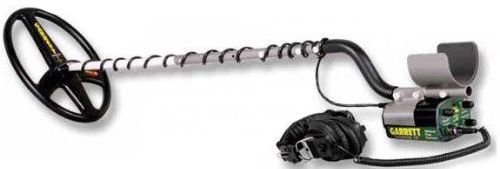
Ground Tracking on the Infinium LS has 3 options: slow, lock, or fast. This detector has no LCD screen and operates on knobs. Threshold, discrimination, and sensitivity are all adjustable. There are 2 search modes on the Infinium LS: All Metal Deep Seeking and Motion. PI metal detectors do not have to be in motion to operate. This detector generates 730 pulses per second and comes with a 10” PROformance™ Double-D search coil. It is near neutral buoyancy, so it will not float away when detecting under water and has 4 control housing configurations.
Minelab Excalibur II VS Minelab Excalibur 1000
Minelab’s Excalibur 1000 is another detector made specifically for diving. It is waterproof up to 200 feet, like the Excalibur II. It uses Minelab’s BBS technology enabling it to transmit 17 frequencies at one time. This detector can be set up for land use or diving use. Diving mode requires the purchase of an accessory fiberglass tube. It also operates on a rechargeable battery pack.
The Excalibur 1000 does not have an LCD screen and works by a series of knobs, like the Excalibur II. It features adjustable sensitivity, adjustable volume, and adjustable threshold. It also features a pinpoint mode. It weighs less than the Excalibur II at 4.1 pounds. It comes standard with a 10” search coil. The Excalibur 1000 is a discontinued model, so it is difficult to find. Some retailers still sell this model but in limited quantities.
Conclusion
Each of these detectors is a great choice. The Excalibur II is one of the best deep seeking underwater metal detectors on the market. It searches deep underground and is fully waterproof up to 200 feet. It also works well on land, so it really is an all-around metal detector. The Excalibur II is a multiple frequency metal detector so it can find a variety of treasures in a variety of terrains with no loss of sensitivity.
Minelab’s Equinox 800 is another multiple frequency metal detector. This model has the advantage of being able to operate on 5 single frequencies when not in multiple frequency mode. This can help if the detector is giving a lot of feedback from the soil or saltwater conditions.
Garrett’s AT Pro is one of their best-selling models. The AT Pro is a simple to use model, unlike the other detectors on this list which require more experience to master. This is a single frequency metal detector so it can only find metals within its frequency range. While it will find larger gold, it will struggle to find smaller bits of gold because of the lower frequency.
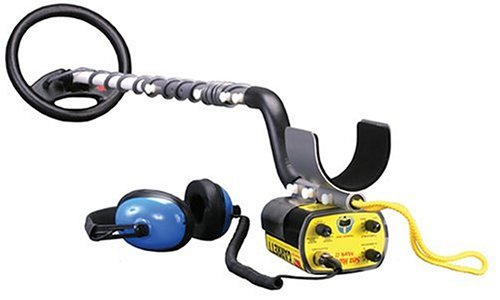
Garrett’s Sea Hunter Mark II is another great deep seeking deep water metal detector. Like the Excalibur II, it is fully submersible up to 200 feet. This detector operates on pulse induction technology, so it is inherently immune to the effects of saltwater, soil mineralization, and electromagnetic interference. This model emits 750 pulses per second. Like the Excalibur II, the Sea Hunter Mark II does not have an LCD screen and uses knobs for control and setting adjustment.
Minelab’s CTX 3030 is one of my favorite metal detectors on the market. This beast has advanced technologies that make it top of its class. This detector is designed more for professional and advanced metal detectorists so it should not be used by new detectorists. This detector is also multiple frequency and operates from 1.5 kHz to 100 kHz. This means it will not miss much! This detector is fully waterproof up to 10 feet, much less than the 200-foot depth of the Excalibur II. This is not the detector for diving but is great for shallow water or land hunting.
Garrett’s Infinium LS is another great diving metal detector. However, it is no longer produced and has been replaced by the Garrett ATX. This detector is still available at some retailers but may be hard to find. Like the Excalibur II, it is submersible up to 200 feet. It is submersible up to 200 feet, so it is a great underwater deep seeking metal detector.
Minelab’s Excalibur 1000 is another discontinued model. It is available at some retailers but may be difficult to find. It is fully waterproof up to 200 feet and operates on Minelab’s BBS multiple frequency technology. This makes the Excalibur 1000 a great deep seeking metal detector.
Any of these detectors will give users the performance they seek and help find more treasures. I always recommend pairing a metal detector with a handheld pinpointer (several companies make pinpointers that are waterproof upwards of 200 feet, so they are appropriate for diving), quality digging equipment, and a finds pouch. Always do your research and make sure you know the laws surrounding metal detecting. Always follow the metal detecting code of ethics and most importantly, HAVE FUN!
If you enjoyed this article, please “like” our Facebook page!
